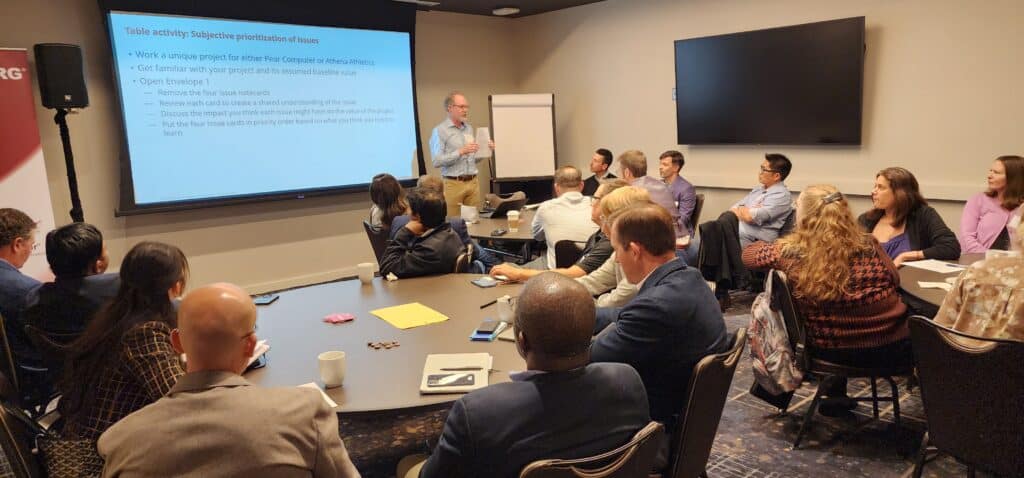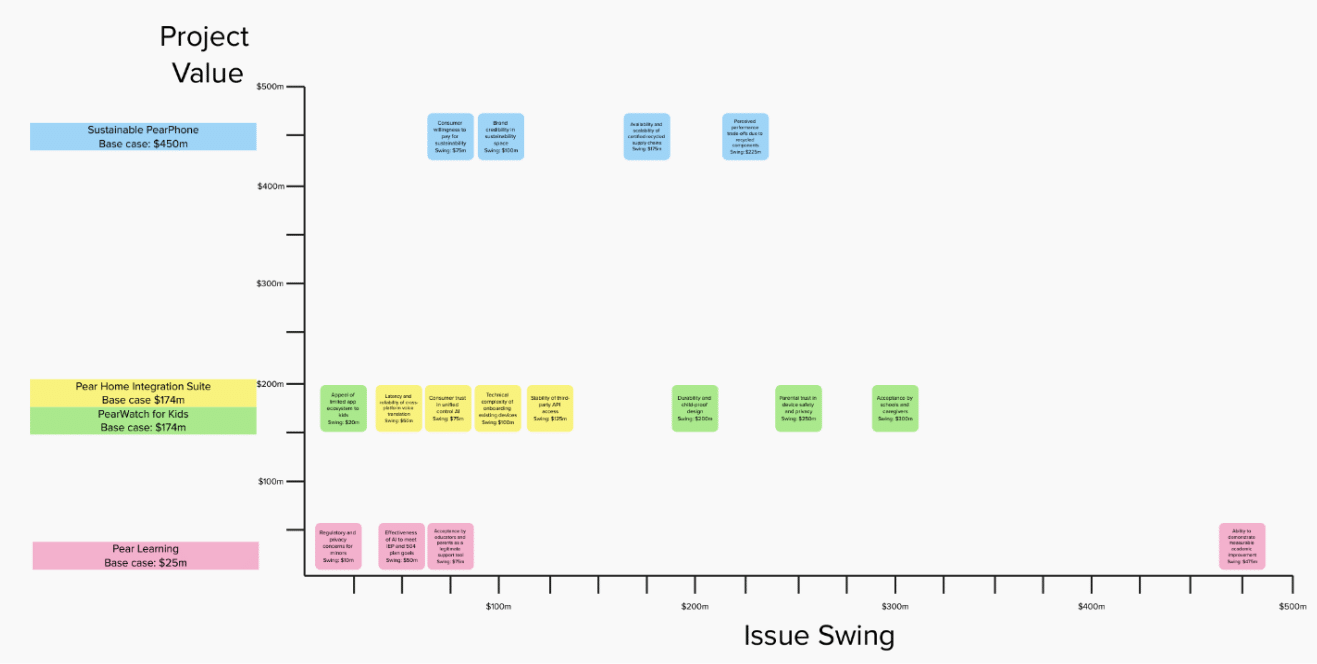Real-World Innovation Challenges Explored at IRI’s 2025 Summit
At the 2025 Innovators Summit hosted by the Innovation Research Interchange (IRI), SmartOrg’s “Fail Fastest” workshop brought together a standing-room-only crowd to tackle one of the most persistent challenges in innovation: how to align cross-functional teams around the right uncertainties to resolve—so innovation projects have a greater chance of success, or can be safely stopped before over-investing.

Why Teams Miss Critical Issues in Early-Stage Innovation
Using a compelling case study from Rogers Corporation that involved auto manufacturers, the U.S. Army Rangers, and frequency-hopping radios, participants explored how well-intentioned teams often miss critical issues by relying on instinct, expert opinion, or narrow perspectives. The story revealed that even when early-stage efforts appear to be focused and well-prioritized, blind spots can derail progress if they aren’t surfaced and challenged objectively. Finance is always going to want a compelling business case, and focusing on the wrong priorities can lead to opportunities that, though feasible, are just too small to move forward. Exploring issues across the Desirability, Feasibility, Viability spectrum with an eye toward finding the upside can dramatically shift the opportunity. And applying a quantitative approach early on provides a clear roadmap for prioritized learning—one that all stakeholders can rally behind.
From Instinct to Insight: Prioritizing Innovation Uncertainty
Attendees worked hands-on in small teams using mock innovation projects from fictitious companies—Athena Athletics and Pear Computer—to identify and prioritize key uncertainties (“issues”) that could significantly impact business case assumptions. Initially, prioritization was based on gut feel and discussion. Then, with access to quantified “swing” data showing how much each issue could affect the project’s value, teams revisited their priorities and experienced firsthand how objective data changes the conversation.
Integrated Learning Plans: A Framework for Better Innovation Decisions
The result? Participants gained a new appreciation for how Integrated Learning Plans—grounded in business impact, not just technical milestones—help teams move faster, align better, and reduce the emotional friction around innovation decisions. They recognized that in the absence of objective data, decision-making often came from individuals with opinions (the highest paid, the most experienced, the loudest), rather than teams with data—which does NOT inspire confidence. They left with tools and a mental model for how to shift from assumption-based planning to evidence-based iteration, increasing their odds of building successful innovations—or exiting weak ones early, before significant resources are spent (i.e., fail fastest).
Why Structured Analysis Outperforms Assumption-Based Planning
While Part 1 of this workshop was specifically directed at prioritizing learning at the project-level, attendees learned that systematizing the de-risking method for early-stage innovation opportunities allows for an apples-to-apples comparison of projects—something most organizations are unable to do today. With such a system in place, innovation and R&D leaders can prioritize learning across the portfolio rather than simply within a project.
De-Risk Dashboard for Pear Computer Company

This De-Risk Dashboard was created in Mural as a workshop activity. Projects are plotted on the Y-axis in accordance with their baseline value. Issues linked to uncertainty are represented on sticky notes and are plotted on the X-axis in accordance with the swing value (which represents the size of the uncertainty). Innovation Navigator generates the De-Risk Dashboard automatically.
Using the De-Risk Dashboard to Compare Innovation Opportunities
And that’s precisely what we demonstrated at the Part 2 virtual continuation of the Fail Fastest workshop. Part 2 extended the lens beyond the project level view to answer a broader, more strategic question: How can we prioritize learning across an entire portfolio of incubation-stage innovation projects?
Mapping Project Value Against Uncertainty to Prioritize Learning
Participants returned to fictional companies Athena Athletics and Pear Computer, this time stepping into breakout groups to examine a new tool: SmartOrg’s De-Risk Dashboard. This portfolio visualization maps project value against the uncertainty of key issues—helping teams compare projects not just by their current value, but by the potential impact of resolving uncertainty. High “swing” values signal big opportunities—or risks—lurking beneath the surface.
Through hands-on exploration and group discussion, participants quickly realized that baseline value alone provides an incomplete picture. One project with the highest current value also carried several high-swing issues, making it a top priority not for execution, but for learning. Another comparison revealed two projects with identical baseline value—but one was “played out” with little uncertainty left, while the other held meaningful upside if certain unknowns could be favorably resolved. A third project, small at face value, showed a single issue with high uncertainty—suggesting that it might become the most valuable in the portfolio if that issue broke in its favor. These moments reshaped how participants thought about where to invest their time, resources, and attention.
Fail Fastest: A Repeatable, Evidence-Based Innovation Method
The key insight? The De-Risk Dashboard equips innovation and R&D leaders with a more complete, data-informed view of their incubation portfolios. It exposes which projects have the potential to grow—and which are unlikely to justify further investment—based not just on assumptions, but on structured analysis. By making uncertainty visible and actionable, teams can align faster, make smarter decisions, and focus their learning efforts where they will have the most strategic impact.
Together, Parts 1 and 2 of the Fail Fastest workshop demonstrated how to move from assumption-based innovation to a repeatable, evidence-based process—one that empowers organizations to not only find better bets, but to fail faster with confidence and discipline.
Join the conversation at our upcoming webinar
We’ll be digging into this Fail Fastest method at our June 25 InnoLead webinar entitled, “How to Fail Fastest within the ‘Messy Middle’ of the Innovation Process.” Register now!
Curious about Failing Fastest but prefer not to wait? Let’s set up a call to explore!
